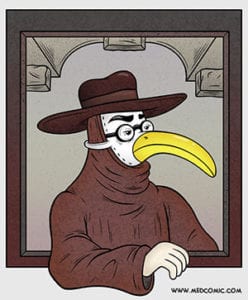SAN DIEGO, CA – In a rare, unexpected occurrence, the pathology duty pager went off at 11 p.m. last night, disturbing the quiet slumber of a third-year pathology resident. “I had no idea what was happening,” says Dr. Andrew Bates, the pathology resident on call. “I was in my bed, sleeping off a particularly grueling seven-hour day, when the thing lit up, made a loud beeping noise, and started buzzing. It lasted about ten seconds, but then it stopped, so I just went back to sleep.”


When it happened again five minutes later, Dr. Bates decided to investigate. “I picked it up, and there was some sort of display showing a series of ten numbers, like a code. I didn’t understand what they meant, but when I Googled them, they matched an phone extension at the hospital I work at during the day.” To his surprise, someone was waiting for his call at that number. “It was like a miracle,” he said.
Dr. Gregory Hanson, the surgery intern who paged Dr. Bates, says it was a shot in the dark. “We were taking a patient to the operating room who we thought might have necrotizing fasciitis. I thought to myself, maybe there’s a way for a pathologist to somehow prepare a tissue sample to look at under the microscope, while the patient is still in surgery.” After searching the hospital’s pager directory, he found a number listed for Duty Pathology. “It was worth a shot,” said Dr. Hanson.
According to Dr. Bates, he was unaware that carrying the pager had any responsibility associated with it. “I thought we just took turns holding it, like when we had to carry an egg around in middle school to simulate parenthood. Who knew the hospital was even open at night?”
He was willing to help, but wasn’t sure what he could do. “Even if they somehow got the specimen to my house, it’s not like I have a cryostat or a microscope in my bedroom.” Still, he was willing to come in early the next day, if they were able to delay the surgery until the morning. “That kind of dedication is a rare quality,” says Dr. Hanson. “Unfortunately, our patient died that night. But the fact that he was willing to come in as early as 7 a.m. the next morning is truly inspiring.”
- 6.9KShares












